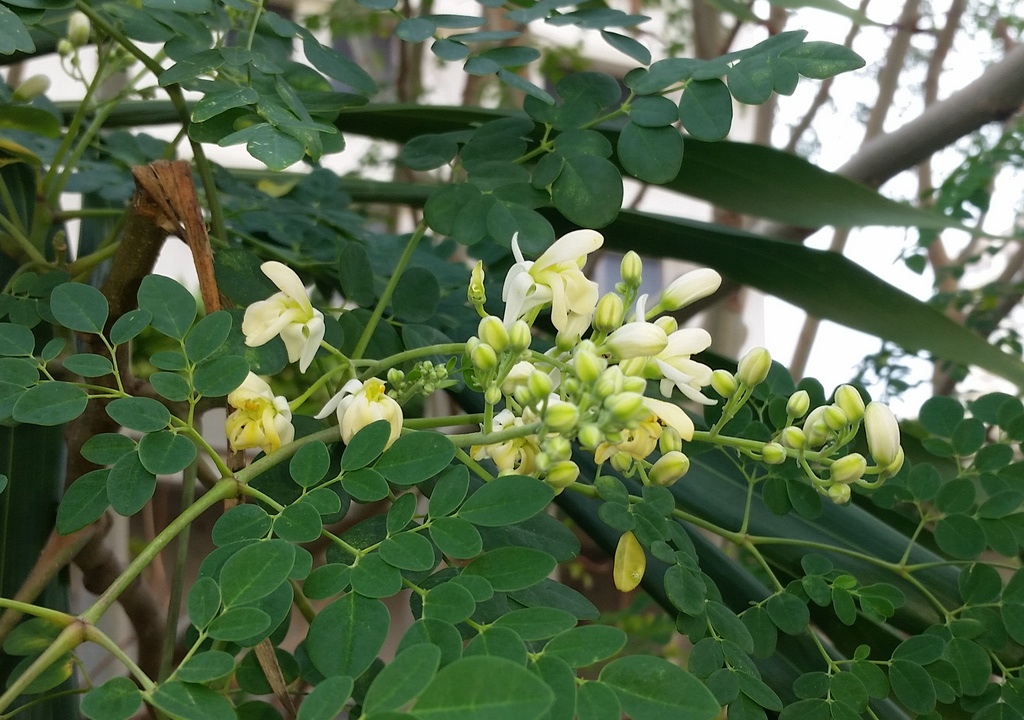The current coronavirus crisis is forcing many Tampa Bay area residents to start thinking about growing their own food. Aside from the usual vegetable garden, edible landscaping is also becoming very popular in the Tampa area. Planting moringa trees is a great way to start your edible landscaping project or to add to your current list of edible plants.
The moringa tree is a native of subtropical regions of South Asia. Its leaves and pods are edible and extremely nutritious. A very fast-growing drought-resistant tree, Moringa flourishes even in arid climates. Florida provides an ideal climate for this wonderful, hardy, healing tree.
Clinical pharmacologist Dr. Monica Macu, Ph.D. writes in her book “Miracle Tree” that the moringa plant is full of nutritional and healing properties. She talks of scientific studies that show the moringa tree (leaves, bark, pods) have seemingly endless medicinal benefits.
Dr. Macu’s writes of myriad wonders and benefits of this incredible, generous plant. There are far too many benefits to list in this article, but some of the medicinal properties of moringa include:
- Extremely high in protein
- High nutritional value
- Large amounts of selenium
- High in phosphorus and calcium
- A high density of Vitamin A in the leaves
- Contains niazimicin (known to suppress cancer cells)
- Loaded with antioxidants (protect cells from cancer)
- Anti-inflammatory
- Antidepressant
- Antibacterial
- Simple, easy to digest proteins
- All the essential amino acids
- Non-allergenic
Some of the health benefits of Maringa include:
- Stimulates protection for the liver
- Promotes hair and skin health
- Strengthens bones
- Helps treat arthritis
- Calms asthma
- Controls high blood pressure
- Helps reduce blood sugar
- Helps prevent cancer
How to grow a moringa tree in the Tampa Bay area
In his video titled “Moringa: Sowing, growing, harvesting, drying the leaves,” moringa farmer Manfred Taege, takes you through the process step-by-step.
- Begin germinating Maringa seeds between paper towels. Keep them wet and warm. It will take about a week for the seedling to sprout.
- Once the seedling has sprouted and the roots are visible, plant them in a small pot for six weeks after germination. Bury only the roots, not the stem.
- After six weeks moringa seedlings can be transplanted into your yard. The more sun the tree gets, the faster it will grow.
- Once the plant reaches about two-and-a-half feet tall, cut off the top six inches to promote leafy growth. Moringa trees grow extremely fast!
- You can harvest the leaves all year round.
Mr. Taege also takes you through the harvesting and drying process in his wonderful video.
If you would like to get a head start, you can also purchase moringa saplings or small trees at some farmers’ markets or nurseries.
Good luck. And enjoy the multiple gifts this tree has to offer!
Tree Masters tree service serves the entire Tampa Bay area. Let us know if we can help you with your tree pruning and trimming needs. Call Joe at 813-404-0944.
Photo by wlcutler is licensed under CC BY-SA 2.0



